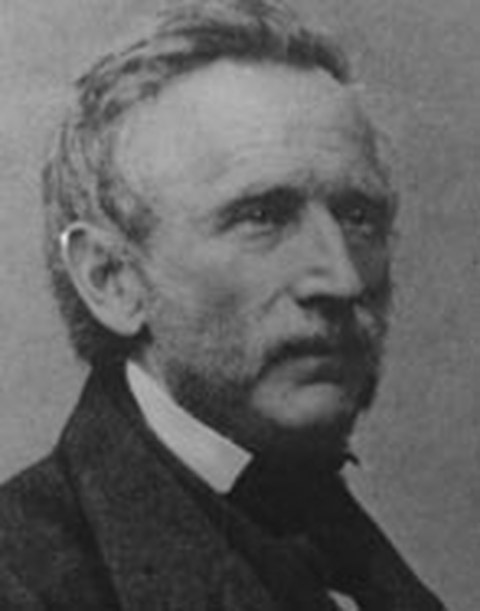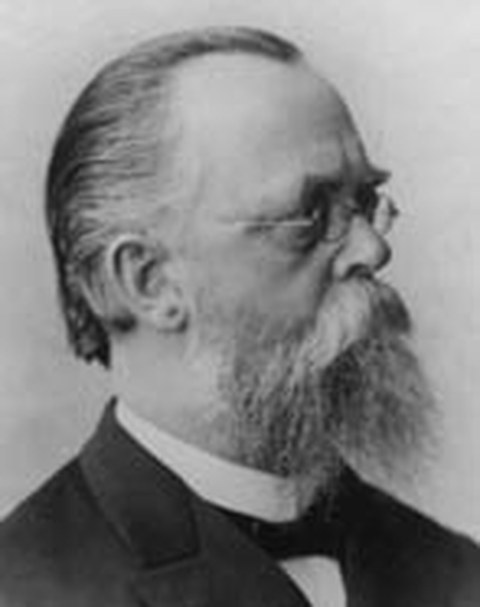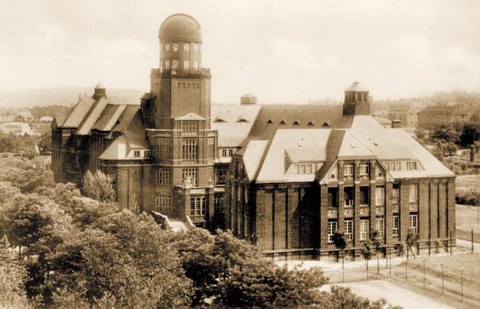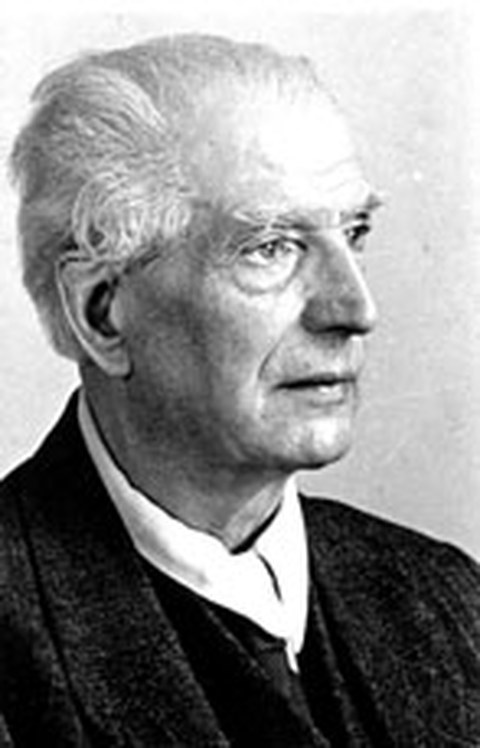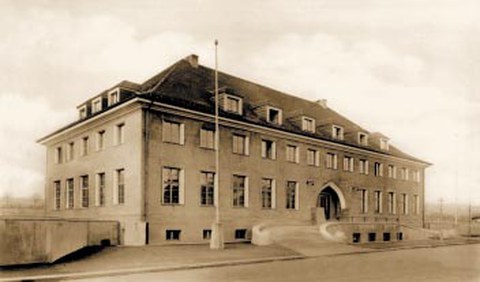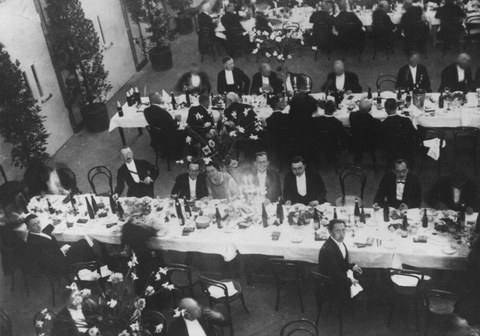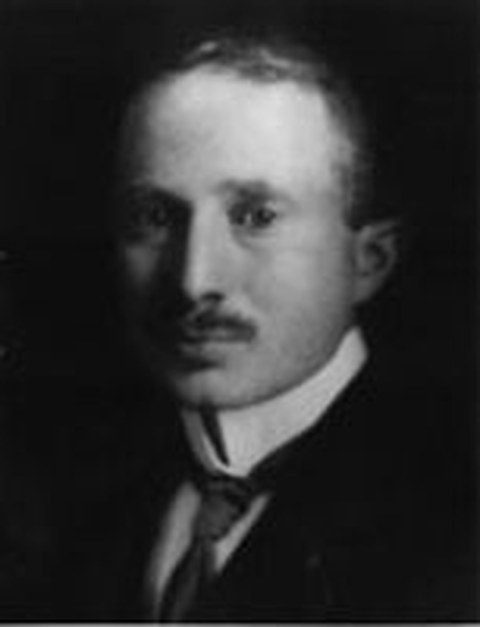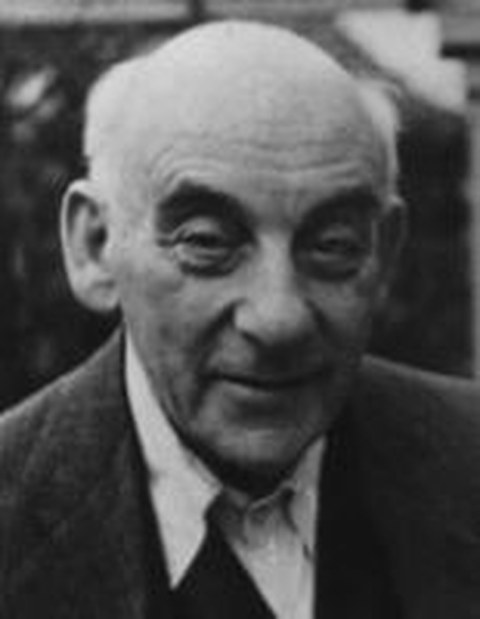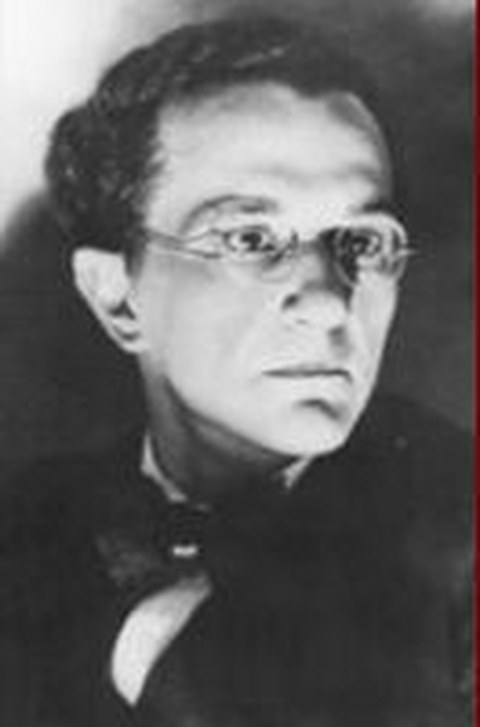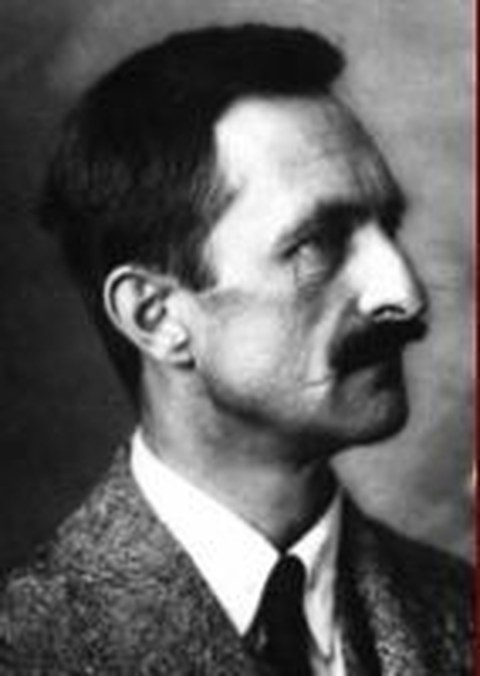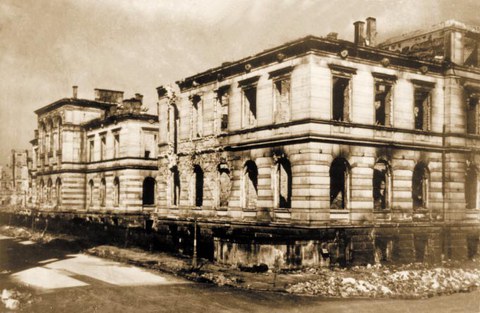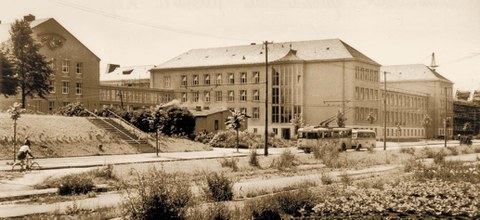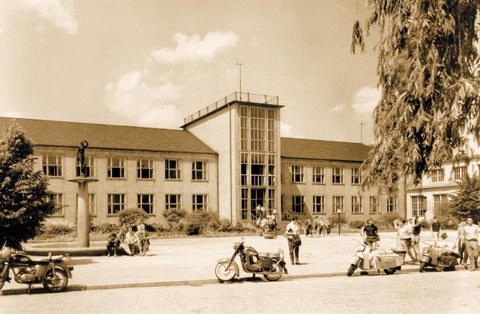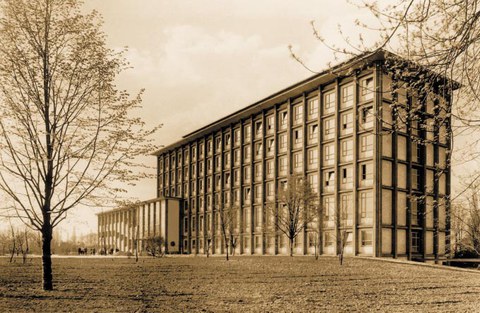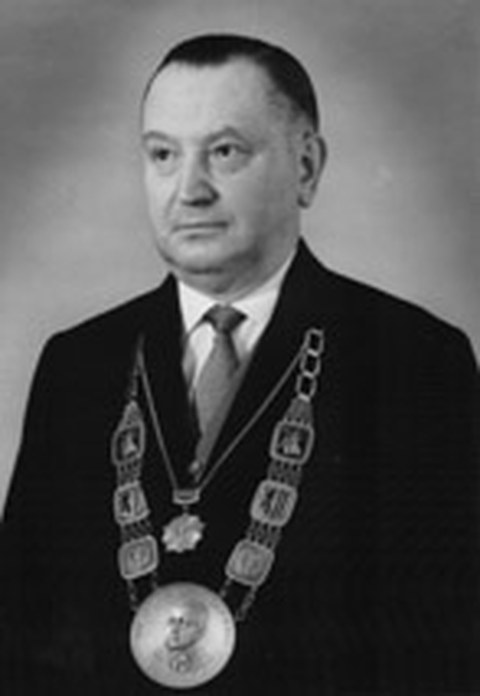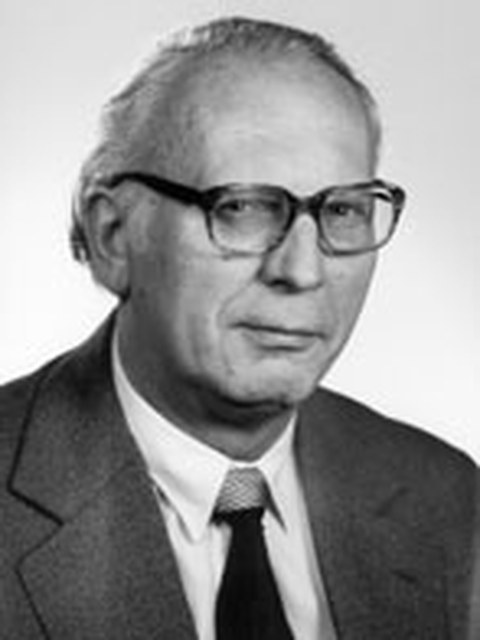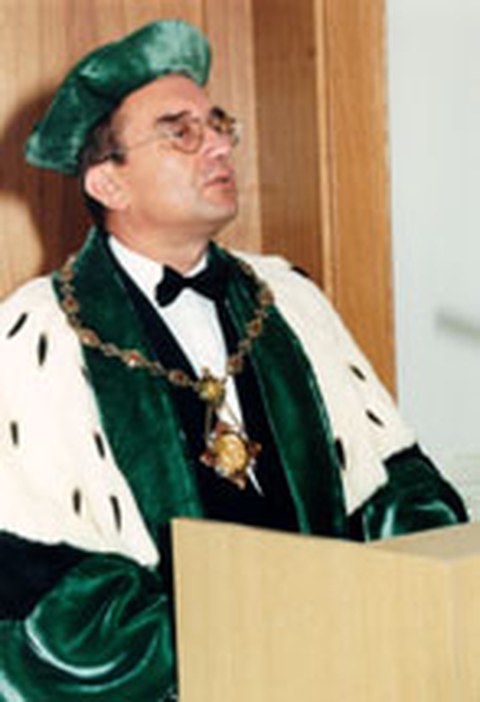Historical development of the Dresden University of Technology
Note: The images and texts used are the property of the University Archive of the Dresden University of Technology. Other sources are named. They may not be copied for commercial purposes or distribution, nor may they be modified and used on other web sites unless they are marked for such use or written permission has been obtained. Any person is authorized, for personal, non-commercial purposes, to view, display and print documents from this site and to download files marked for such use. No part or excerpt of any content or information on this site may be copied, modified, distributed, or posted on any other server without the express written permission of the University Archives.
1828
The Technical School is founded in Dresden and the Royal Saxon Commerce Deputation takes over the administration. Wilhelm Gotthelf Lohrmann (1796-1840), who did great scientific service as Inspector of the Saxon Cameral Survey, is the director. For the time being, the domicile of the institute is located very modestly in the Garden Pavilion on Brühlsche Terrasse and in a vault of the Kuffenhaus on Zeughaus Square. Outstanding teachers were convinced of the merits of working at the institute. Among them was Johann Andreas Schubert, designer of the first operational German steam locomotive "Saxonia."
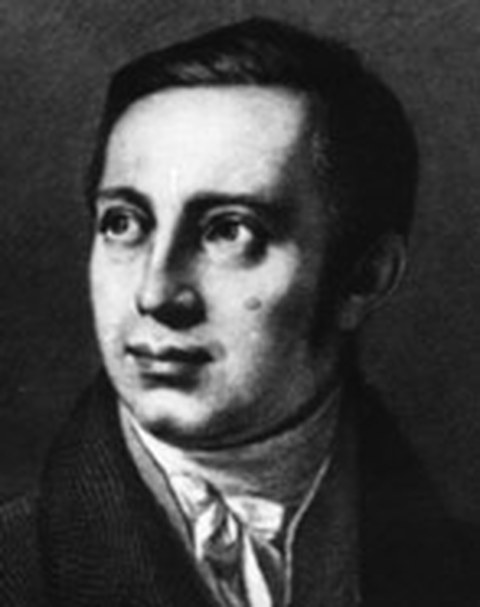
Prof. Wilhelm Gotthelf Lohrmann
1833
Due to the need for substantially more space, the Technical School is moved to the former armory at Juedenhof.
1844/46
A new building is erected at Anton Square, according to the plans of the architects Heine (1802-1880) and Arndt (1807-1889), to house the Technical School. Gottfried Semper (1803-1879) gives his expert opinion of the new building, in which he also writes about fundamental thoughts concerning architectural problems.
1851
The establishment is renamed the Royal Polytechnical School. Under the initiative of the Director, Julius Ambrosius Hülsse (1812-1876), and with the close cooperation of the Royal Government Commissioner Dr. Weinlig, the "Upper Department" is divided into three sections that concentrate the students into three subject areas. The right exists to award certificates, based on "Matriculation Examinations," which allow the bearer to purpose as a trade.
1865
Introduction of a new organizational plan. The "Lower Department" now sets up a "General Course" that all students must take. The "Sections" of the "Upper Department" are developed into four technical schools:
- Mechanical Technical School (A),
- Engineering School (B),
- Chemistry Technical School (C),
- and another school whose tasks consist of training future teachers of Mathematics, Natural Sciences, and Technology.
The program duration at the technical schools is set at three years. The distinction is now made between "students" who take the "General Course" and students who attend the Technical School.
1871
In recognition of the high level of the education offered in technology and the natural sciences, the school is renamed the Royal Saxon Polytechnical College. The Polytechnical College takes on the character of a university. The administrative hierarchy is still organized autocratically, however. The technical schools are now referred to as departments. 281 students are enrolled at the college (more than 60 % belong to the Engineering Department.
1873
Gustav Zeuner (1828-1907), internationally renowned Thermodynamics Engineer and Epistemologist, is appointed Director of the Polytechnical College. Besides taking classes in the Technological Sciences and Natural Sciences, studying the Arts and Linguistics is also highly regarded. Thus, the following subjects are taught in the "General Sciences Department": Economics, Jurisprudence, Philosophy, History, Art History, History of Literature, and Modern Languages.
1875
The representative main building of the Polytechnical College is completed near the main train station. With the founding of the Structural Engineering Department, the tradition of teaching architecture at the college is established.
1883
Introduction of the Diplom Examination in place of the Absolutorium. Students are now required to write a Master's thesis, as is the case at the Universities of Technology in Vienna, Graz, and Stuttgart.
1890
The status of the Polytechnical College increases. It is now called the Royal Saxon Technical College. Ernst Hartig (1836-1900), professor of Mechanical Technology, becomes the first elected College Rector. 308 students, including 28 foreigners, are registered at the university.
1900
The Doctoral Degree Regulations take effect. Friedrich Siemens (1826-1904) receives the first honorary doctorate from the TH Dresden. 1007 students study at the TH Dresden (Technical College of Dresden), including 232 foreigners, primarily from Eastern and Southern Europe, but also from overseas. According to the plans of Karl Weißbach (1841-1905), large buildings are erected for the Mechanical Engineering laboratories and the Electrotechnology Institute on the grounds at the foot of the Räcknitzer Höhe (on George Bähr Street and Helmholtz Street in the southern suburb that was being developed at the time) . Shortly thereafter, this complex is expanded to include an Electricity and Heating Power Station.
1900
Arthur Schloßmann (1867-1932) is appointed Associate Professor of Physiological Chemistry and General Physiology. As early as 1897, Schloßmann, together with the major industrialist Karl August Lingner (1861-1916) and other Dresden citizens, founds the "Verein Kinderpoliklinik in Johannstadt mit Säuglingsheim" that erects the first in-patient institute for the care of infants in the world in 1898. The institute becomes the precedent for today's Children's Hospital of the Carl Gustav Carus Faculty of Medicine.
1913
The Faculty of Civil Engineering receives a large and representative new building, known today as the Beyer Building.
1914/18
322 members of the College are killed in battle during World War I in their role as enlisted men, non-commissioned officers, and officers. Among them is fighter pilot and former TH Dresden student Max Immelmann (1890-1916).
1918
The Institute of Automotive Engineering is founded under the direction of Adolph Nägel (1875-1939).
1919
The Institute of Metallurgy and Materials Science is founded.
1919/20
Introduction of the Foreign Studies Seminar.
1921
Founding of the "Society of Sponsors and Friends of the Technical College of Dresden", which the leading representatives of the Saxon State Government, industry, and banks join.
Establishment of the association "Economic Aid for the German Student Body" (since 1929 known as the "German Studentenwerk" at the TH Dresden). After the first successful efforts in the form of the "Dresden University Economic Society," this Dresden student self-help organization develops into one of the leading organizations of its kind in Germany.
The General Department is separated from the Mathematics-Natural Sciences Department.
1922
Economics becomes a subject in the General Department of the TH Dresden. As opposed to at the universities, the focus at TH Dresden is not only on technical subjects, but also on Industrial Psychology and Psychotechnology.
1923
Incorporation of the College of Education Dresden-Strehlen into the General Department of the College (as of 1925 known as the Department of Cultural Studies). Economics, Political Science, Jurisprudence, Pedagogy, History, Art History, Comparative Linguistics, and Comparative Literature are firmly established at the TH. The university character of the college thereby steadily grows.
1924
Founding of the Institute of Measurement Engineering and Interchangeable Manufacture under the direction of Georg Berndt (1880-1972). Expansion of the Physics Institute, including setting up the Laboratory for Applied Radiography.
1925
Completion of the residence hall on the site donated by Theodor Bienert.
1928
Under the rectorship of Adolph Nägel, the TH Dresden celebrates its 100th anniversary on June 4, 1928. The university now has 63 full, 22 associate, and 17 honorary professors. 24 private lecturers are also teaching. The number of students reaches 2705, with an additional 332 students attending and sitting in on lectures.
1929
By ministerial decree, the Tharandt Forestry Academy (later called the Forestry College), founded by Heinrich Cotta (1763-1844) and one of the oldest academic training institutions for forestry in the world, is annexed to the TH Dresden as a department.
1933/34
The College is forced into line and the Principle of Leadership is introduced. Because of the "Law for the Reestablishment of Permanent Civil Service", famous university teachers are forced out of their posts and suffer reprisals. Among them are the physicist and discoverer of the crystal photon effect, Harry Dember (1882-1943), the romanist Victor Klemperer (1881-1960), the doctor and hygienist Rainer Fetscher (1895-1945), the political scientist Robert Wilbrandt (1875-1954), and Paul Luchtenberg (1890-1973), professor of Pedagogy, Philosophy, and Psychology, and future co-founder of the FDP and Culture Secretary of North-Rhein Westphalia.
1936
The College of Education is separated from the TH Dresden.
1942
The College departments are renamed faculties:
- Faculty of General Science
- Faculty of Civil Engineering
- Faculty of Mechanical Engineering
- Faculty of Forestry Science.
1945
Air raids over Dresden on February 13 and 14, 1945 cause great loss of life at the university. Many buildings are heavily damaged or destroyed.Soviet occupation forces take control of the College.
Most members of the Nazi Party (NSDAP) are fired from their posts as teachers or administrators. Some of those who are let go are later re-hired.
1946
The Technical College of Dresden reopens under the most difficult conditions. The internationally recognized Professor of the Bases of Mechanical Engineering and Conveying Engineering, Dr. Enno Heidebroek (1876-1955), becomes the first rector.
Setting up of:
- Faculty of Education
- Faculty of Municipal Economics
- Faculty of Forestry
491 students are enrolled with the permission of the Soviet Military Administration in Germany (SMAD) (453 students actually begin to study). They are taught by 42 university teachers, including several lecturers and assistants.
Friedrich Adolf Willers (1883-1959) holds the first mathematics lecture for students of all subject areas.
1949
7 Faculties are established (including the faculty that prepares young factory and agricultural workers for studying at universities that emerged from an institution for preliminary studies):
- Faculty of Mathematics and Natural Sciences
- Faculty of Civil Engineering
- Faculty of Mechanical Engineering and Electrical Engineering
- Faculty of Economics and Traffic and Transportation Science
- Faculty of Forestry Science
- Faculty of Education and Cultural Studies.
1950
On April 25, 1950, the foundation stone is laid for the new complex of buildings on Zellescher Way, which today houses institutes of the Faculty of Mathematics and Natural Sciences. Since 1961, a part of the building complex has been called the Willers Building In 1994, the lecture hall building is named the Trefftz Building.
On April 20, 1951, the Faculty of Transport and Communications is opened and the foundation stone is laid for the building complex on Hettner Street.
1952
On the basis of a central decision, the Faculty of Transport and Communicationsat the Technical College of Dresden becomes the College ofTransport and Communications in September 1952. The Faculty of Electrical Engineering is founded (until 1951 there was a Department of Electrical Engineering within the Faculty of Mechanical Engineering and Electrical Engineering). Among the most well-known scientists are Heinrich Barkhausen (1881-1956) and Ludwig Binder (1881-1958).
1954
The Department of Lightweight Construction is founded on instructions of the State Secretariat for Higher Education.
1955
Already in 1950, construction begins on the new Low-Voltage Institute called the Barkhausen Building. Until 1955, the first three stages of construction of the extensive building complex between Helmholtz St. And Georg Schumann St. Are completed. The complex is used by the Department of Electrical Engineering.
Founding of the Department of Nuclear Technology. It remains until 1962.
There are 9 Departments.
1956-1960
On the North side of Zellescher Way the Andreas Schubert Building for the newly-founded Department of Nuclear Technology is erected. In 1962, this department is dissolved.
Today it is used by various institutes of the Faculty of Mathematics and Natural Sciences..
1956
The Department of Lightweight Construction at the TH Dresden becomes the Department of Aviation. In 1961 it is dissolved.
1957
The TH Dresden takes over the former District Court building. The construction and renovation of the building complex that was heavily destroyed in the war lasts until 1961. Primary users are the Faculties of Mechanical and Civil Engineering, Hydroscience and Forestry. Since 1961 it is called the Georg Schumann Building. After 1990, parts of the building complex are renamed Hülsse and Tillich Building.
1961
The Technical College of Dresden receives the status of Technical University. During the ceremonies on October 5, 1961, the rectorship is given from Werner Gruner (1904-1995) to Kurt Schwabe (1905-1983). Kurt Schwabe was the leading sponsor of the founding of the university. 10,741 students are registered, of which 4 per cent are foreigners.
1965
The 4th stage of the construction of the building complex, the Barkhausen Building, is completed, with the antenna tower of the Institute of High Frequency Technology and Broadcast Electronics, and the Lecture and Conference Hall with 500 seats (today called the Schönfeld Lecture Hall) on Nöthnitzer St.
1968
In accordance with the 3rd University Reform, the structure of the TU Dresden (Dresden University of Technology) is also radically changed. Structures which have grown over history are negated under increasing party-political influence. The traditional scientific institutes are done away with. The Departments lose their original significance. 22 Sections are formed.
1986
The Dresden Engineering University, rich in tradition and founded in 1861 as a trade school, is united with the TU Dresden and becomes the Center for Information Studies of the university system of the GDR. At the end of 1990, the Faculty of Computer Science is founded.
1990
Setting up of Faculties (February 12, 1990):
- Faculty of Social Sciences
- Faculty of Natural Sciences and Mathematics
- Faculty of Electrical Engineering and Electronics
- Faculty of Mechanical Engineering Faculty of Construction, Hydroscience, and Forestry.
Election of the new senate from the circle of chosen members of the Academic Council (February 26, 1990). Election of Professor Günther Landgraf [2] of the Faculty of Mechanical Engineering to Rector by the Academic Council (Investiture on March 12, 1990).
11,220 students are registered, of which 8.6 % are foreigners.
1991
The Senior Governmental Director Alfred Post, formerly Vice-Chancellor of the Universität-Gesamthochschule Essen, becomes Chancellor of TU Dresden. The reconstruction of the University Administration begins.
13,000 students are enrolled.
Beginning of the integration of the "Karl Friedrich Wilhelm Wander" College of Education and the university part of the "Friedrich List" College of Transport and Communications into the TU Dresden. Preparation of the founding of a Faculty of Medicine at the TU Dresden.
Festive refounding of the Society of Sponsors and Friends of the Dresden University of Technology. The first founding celebrates its 70th anniversary.
The TU Dresden becomes a member of the German Research Association (DFG).
Founding of the Academy of Further Education and Transfer of Knowledge at the Dresden University of Technology e. V.
1991/94
Confirmation and newfounding of the following faculties on the basis of the Law concerning the Structure of the University System and the Universities in the Free State of Saxony of April 10, 1992
- Faculty of Mathematics and Natural Sciences
- Faculty of Mechanical Engineering
- Faculty of Electrical Engineering
- Faculty of Arts and Social Sciences (until April 30, 1993)
- Faculty of Philosophy Result of inclusion of parts of the
- Faculty of Arts and Social Sciences (April 30 / May 1,1993)
- Faculty of Linguistics and Literature Result of take over of parts of the Faculty of Arts and Social Sciences (April 30 / May 1,1993)
- Faculty of Computer Science November 6, 1990 founding of the faculty; celebration on April 18, 1991
- Faculty of Education Sciences July 9, 1993, founding of the Faculty
- Faculty of Law February 12, 1991 founding of the Faculty; celebration on March 7, 1991
- Faculty of Transport and Communications "Friedrich List" November 6, 1992 founding of the Faculty and celebration
- Faculty of Economics and Business Management October 12, 1993 founding of the Faculty
- Faculty of Medicine Carl Gustav Carus October 1, 1993 founding of the Faculty; October 25, 1993 celebration
- Faculty of Construction, Hydroscience, and Forestry Dissolved in 1994.
Formation of three new Faculties:
- Faculty of Forestry, Water Science, and Geosciences (February 21, 1994)
- Faculty of Civil Engineering (January 1, 1994)
- Faculty of Architecture (May 17, 1994).
1993
Academic Council meets at the TU Dresden and for the first time in the new Federal States.
1994
Professor Achim Mehlhorn of the Faculty of Mathematics and Natural Sciences is elected Rector by the Council of the TU Dresden in June 1994 (Re-elected in 1997).
A Heart Center is opened at the Faculty of Medicine .
1995
The Technology Center Dresden receives a new building as a science transfer partner of the University.
The University opens the reconstructed Guest House on Einstein St.
1996
Foundation stone is laid for the new Lecture Hall Center of the TU Dresden with four large lecture halls, twelve seminar rooms and one art room, with a total of 3,470 seats.
Topping-out ceremony for another nursing house at the main entrance of the University Hospital and for a second Guest House at Weber Square.
Founding of the Institute for Air and Space Technology.
Founding of the Saxon State Library, State and University Library Dresden on the basis of a law.
First heart transplant in Dresden (in 1977 the first liver transplant within the then COMMICON), Handing over of the Bone Marrow Transplant Center of the University Hospital.
Festive celebration on the occasion of the 50th anniversary of the reopening of the TH/TU Dresden.
1997
Approximately 23,000 students are enrolled at the TU Dresden, 5.2% of whom are foreigners.
Topping-out ceremony for the Lecture Hall Center on Berg St.
Dedication of the new building of the Heart and Blood Circulation Center Dresden on the land of the Carl Gustav Carus University Hospital (September 29, 1997).
Jeremy Berg and Katrin Pönisch-Pörschke

